Overview of the two-chamber smartphone ASUS ZenFone 3 Zoom
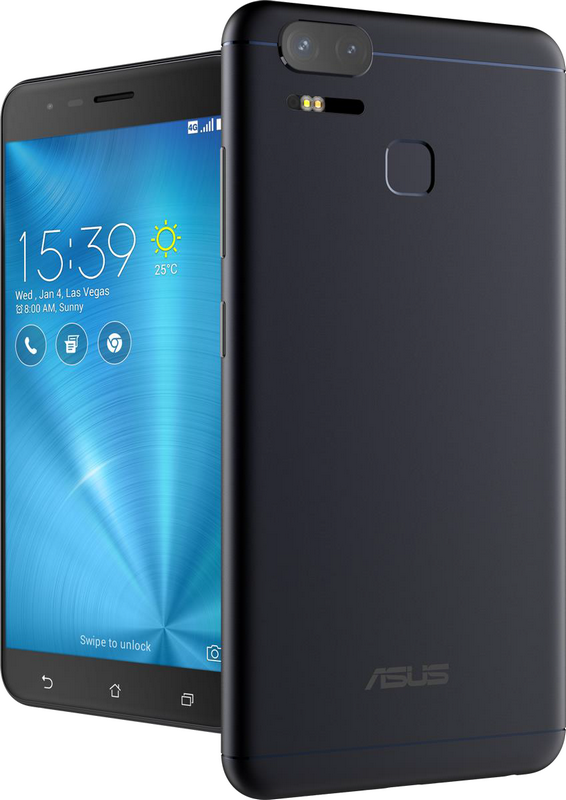
At the CES 2017 exhibition held at the beginning of the year, a new trend in the world of mobile photography was clearly outlined: smart phones with two main cameras. It will probably soon become mainstream. I must say that different manufacturers solve different problems, equipping smartphones with two cameras. In some models, both cameras are shot simultaneously, and then the images are combined into one to improve quality. In other models, cameras are taken simultaneously in different resolutions, after which again the images are brought together. Also, two cameras can be used to enhance artistic expression. For example, when shooting a portrait, both cameras are triggered simultaneously, but with different parameters, so that the portrait turns out to have a spectacularly blurred background.
But the developers of ASUS ZenFone 3 Zoom (ZE553KL) took a different path: they equipped the smartphone with two main cameras with different lenses. Why - read under the cut.
Specifications
Operating system : Android 6.0 (an upgrade to Android 7.0 is expected soon)
Processor : eight-core Qualcomm Snapdragon 625, up to 2.0 GHz, FinFET LPP (Low Power Plus) power saving technology
RAM : 4 GB
Video : Adreno 506
Display : 5.5 inches, 1920x1080, AMOLED, 500 cd / m2 brightness, Gorilla Glass 5
Data storage : 64 GB
Memory card : micro SD up to 2 TB
Cameras :
Front: 13 megapixel, f / 2.0
Basic 1: 12 Mp, equivalent focal length 25 mm, f / 1.7, 6-element lens, optical stabilization
Basic 2: 12 megapixel, equivalent focal length of 59 mm, 2.3-fold optical and 12-fold maximum zoom, 5-element lens
TriTech + triple focusing: contrast / servo AF, 2nd generation laser AF, Dual Pixel phase AF
Audio : 5 magnetic speakers. Supports DTS Headphone: X technology (requires headphones that support this technology). Hi-Res Audio (192 kHz / 24 bit) support
Wireless :
802.11 b / g / n
Bluetooth 4.2
Wi-Fi direct
Navigation : GPS, A-GPS, GLONASS, BDSS
Battery : 5000 mAh (non-removable)
Power supply : output 5 V, 2 A, 10 W
Dimensions : 154.3 x 77 x 7.99 mm (H x W x T)
Weight : 170 gr.
AnTuTu specifications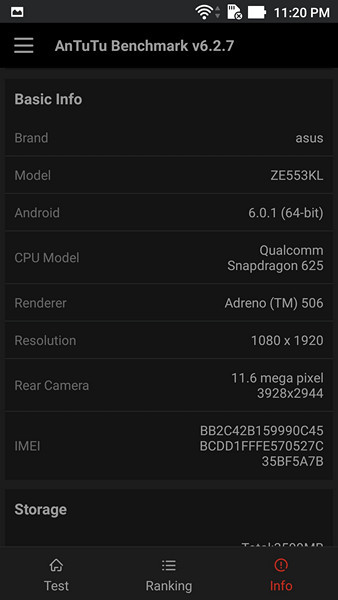
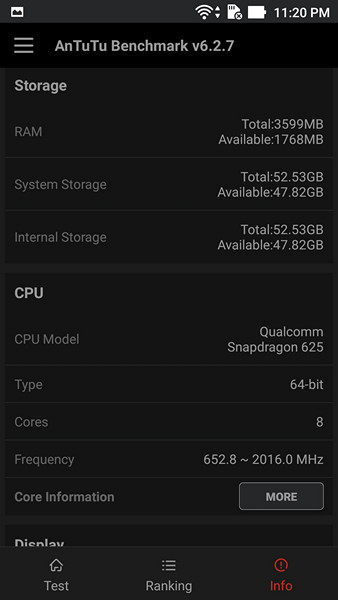
')


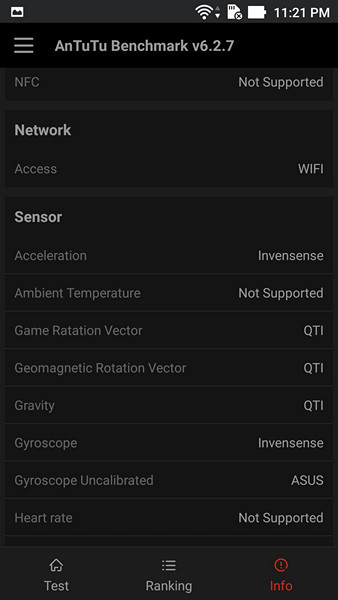
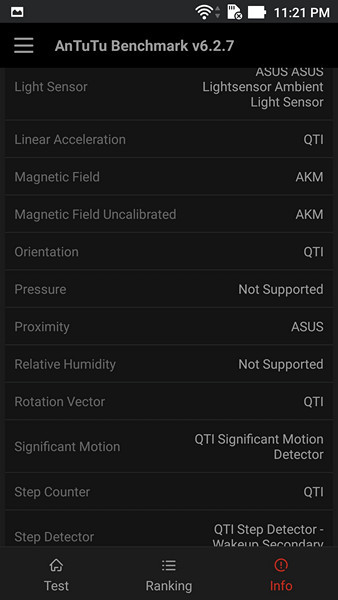


')




Appearance and equipment
Included with the smartphone is charging, cable and USB-USB Type C adapter, ZenEar headset and several pairs of interchangeable ear cushions.
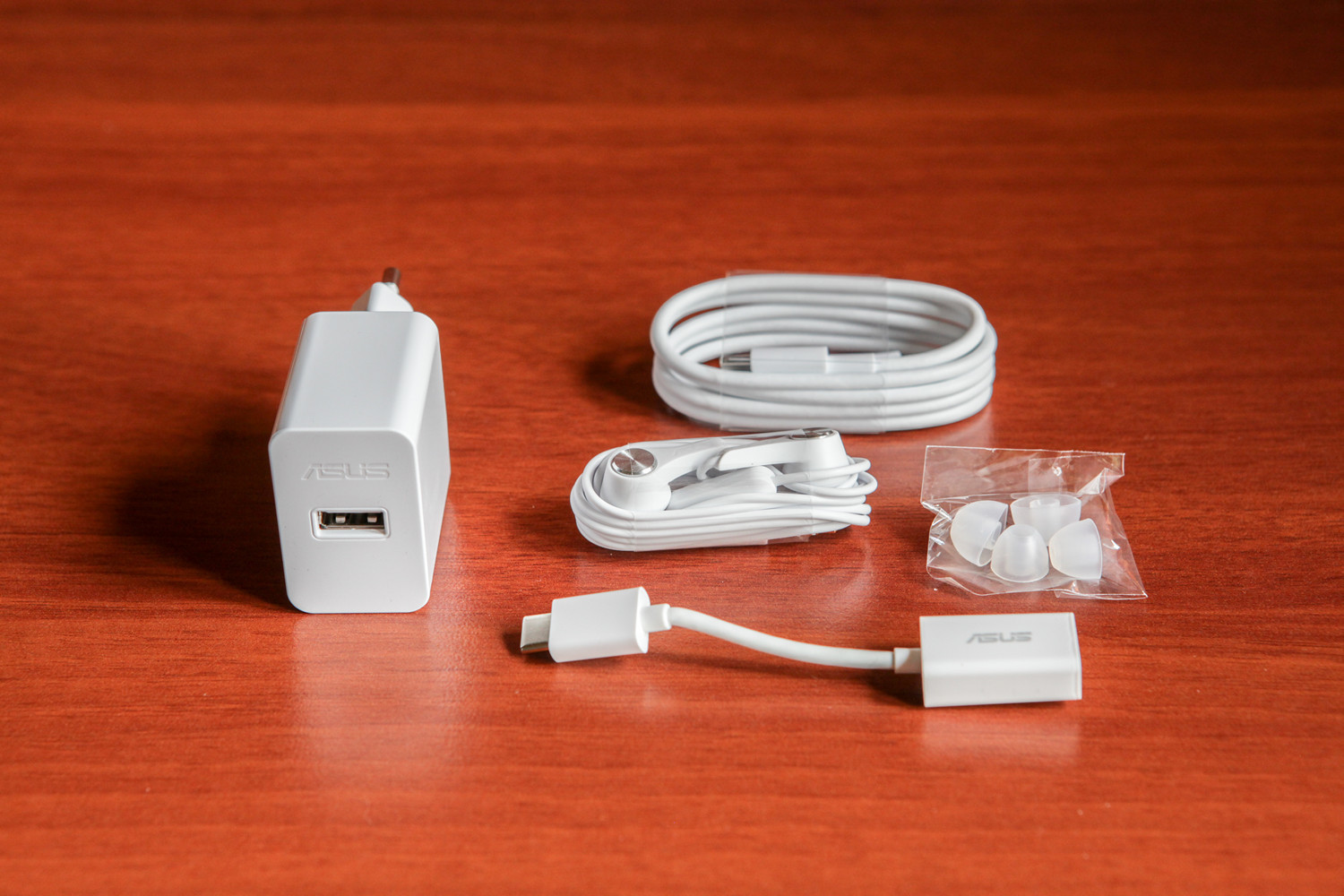
The smartphone is made in an aluminum "streamlined" case, with symmetrically arranged at the top and bottom bars, which probably indicate the boundaries of the dielectric inserts. In the center is a fingerprint sensor slightly recessed into the case. Just under the index finger.
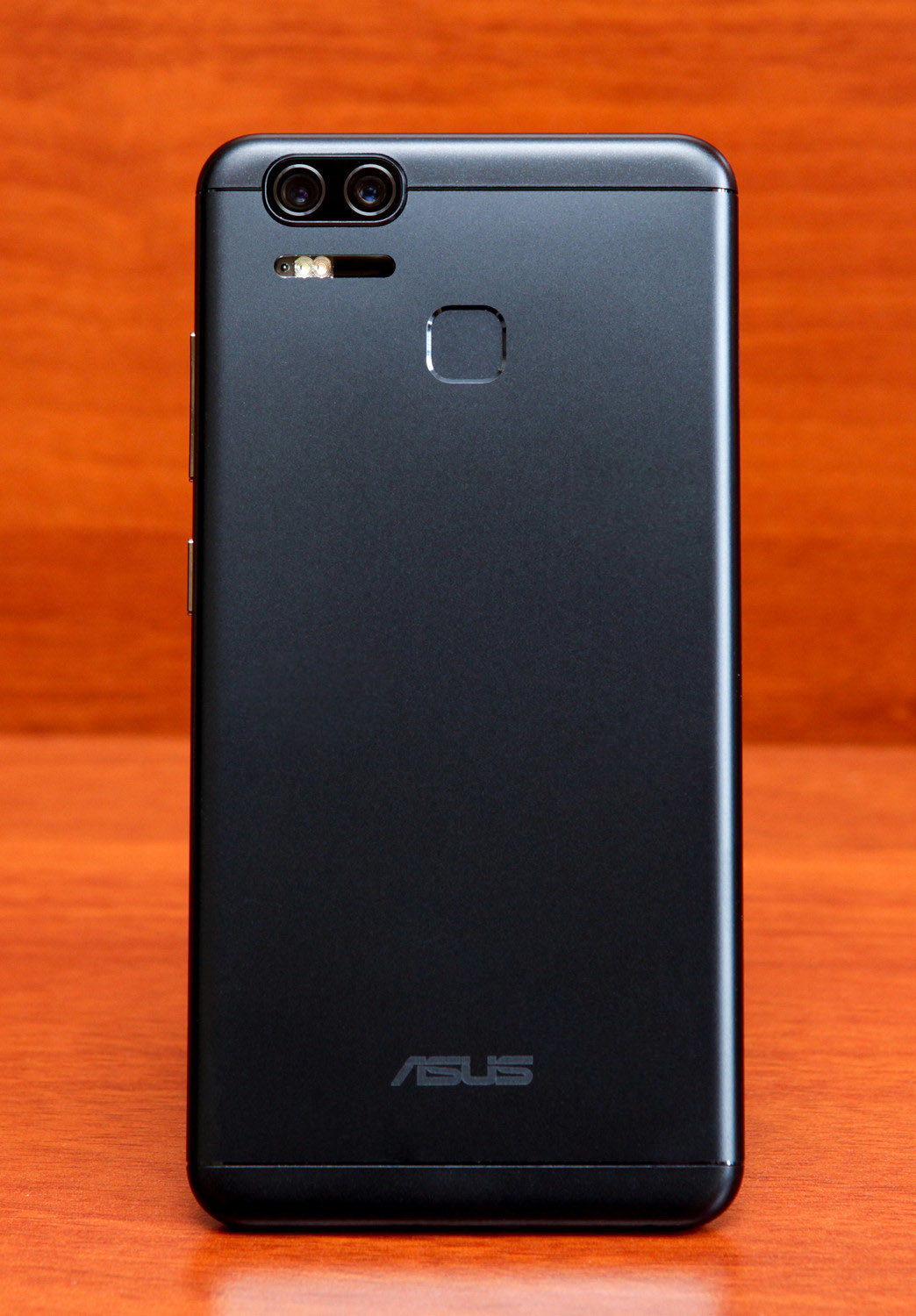
Two lenses of the main cameras are compactly located in the left corner, and below them - from left to right - an RGB sensor, a two-color flash and a laser focusing system.
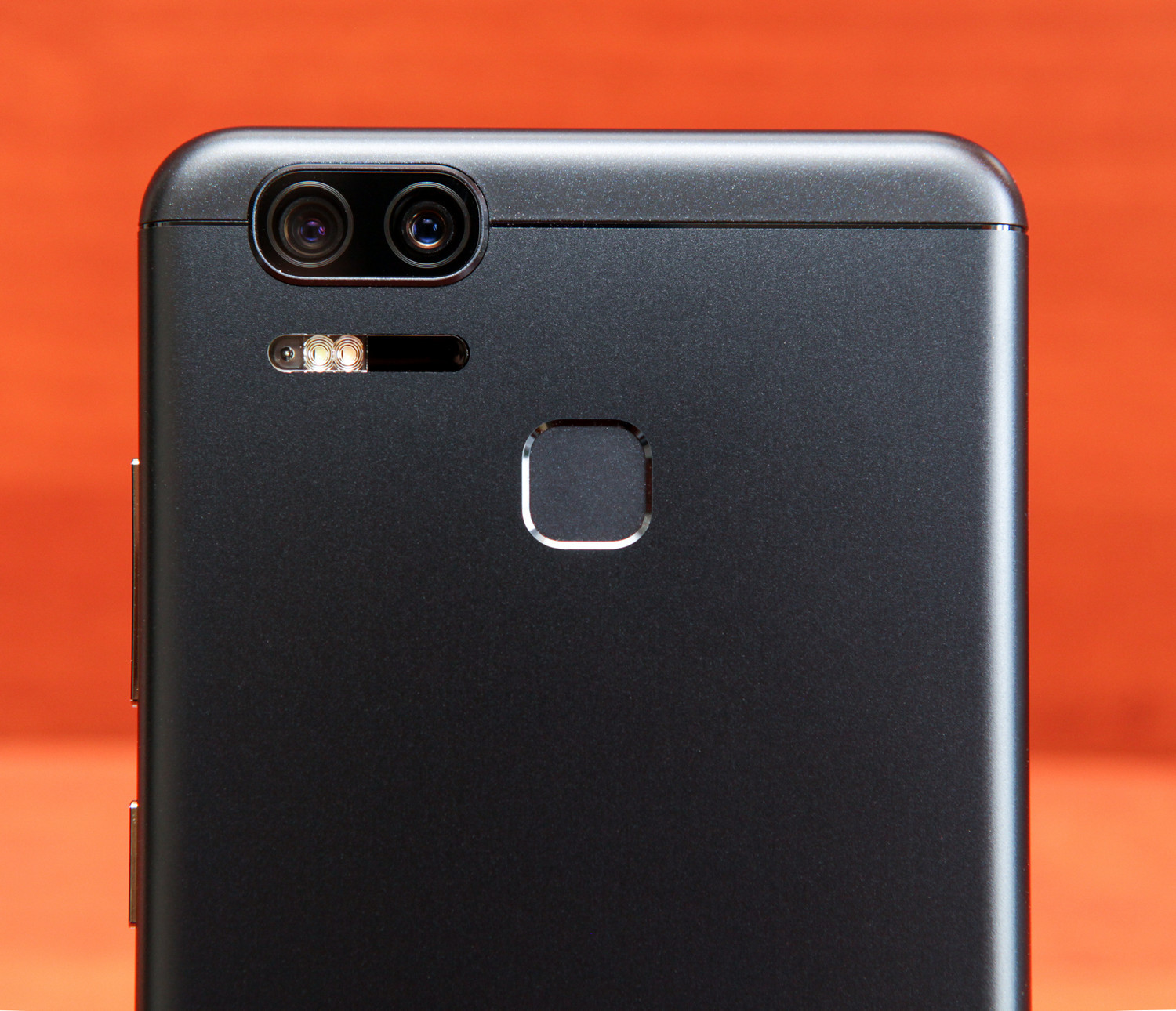
At the top there is one of two microphones.

Bottom - speaker net, USB Type C port and audio jack.
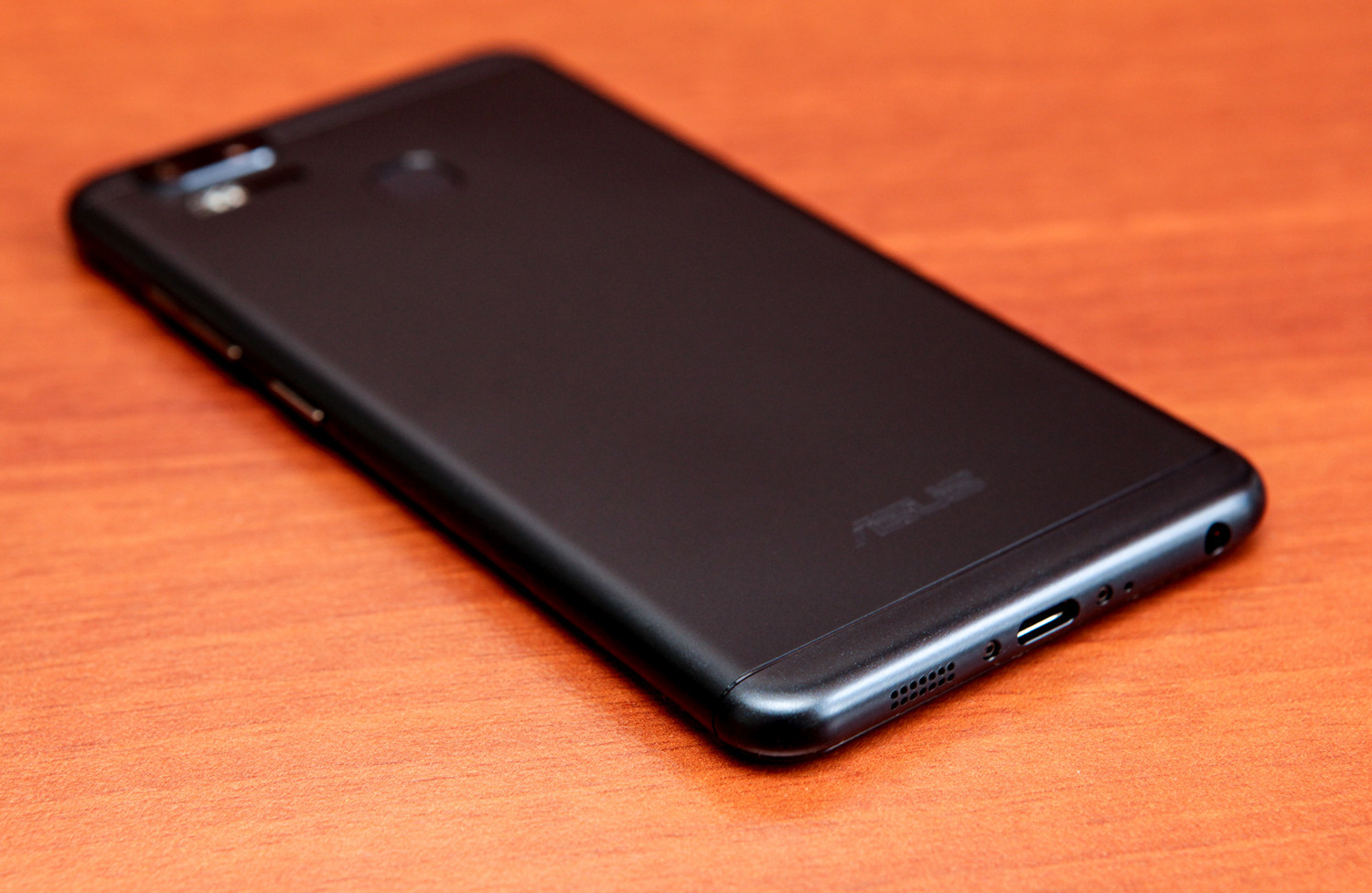
On the left side there is a tray for SIM cards and a micro SD memory card. At the same time, you can use either two nano SIM or one nano SIM + memory card.

On the right side are the volume and power buttons. I would have made them a little less prominent, but this is purely a matter of habit.

The front part is covered with a protective Gorilla Glass 5 with rounded edges.
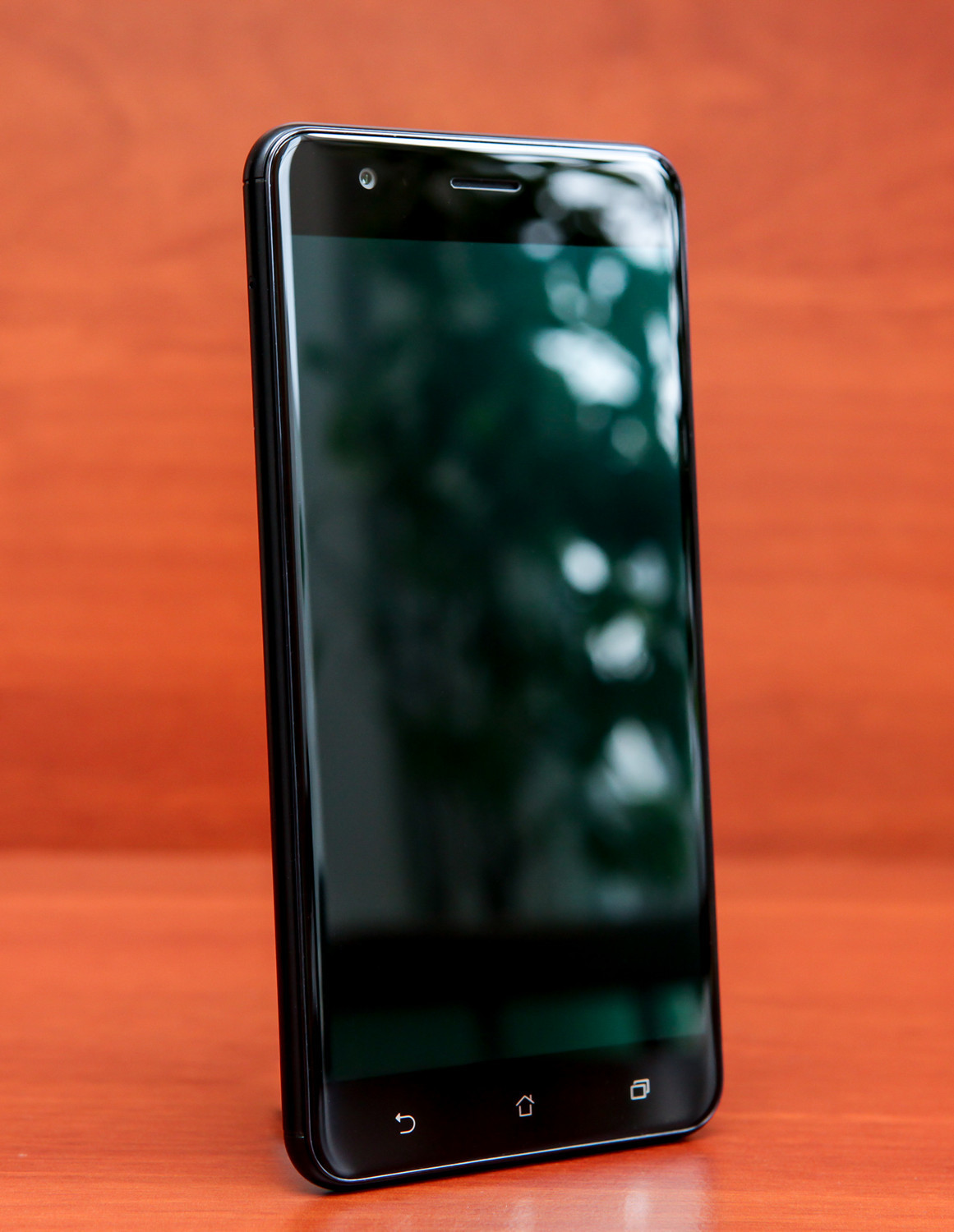


Despite the roundness, the phone feels quite “flat” in the hand - with a diagonal of 5.5 inches, its thickness is only 8 mm. For its size, it is light, 170 grams of live weight. Anodized aluminum is not the fastest material; a couple of times the phone almost slipped out of my hands when I put it in the inside pocket of my jacket.
ZenFone 3 Zoom will be available in three colors:
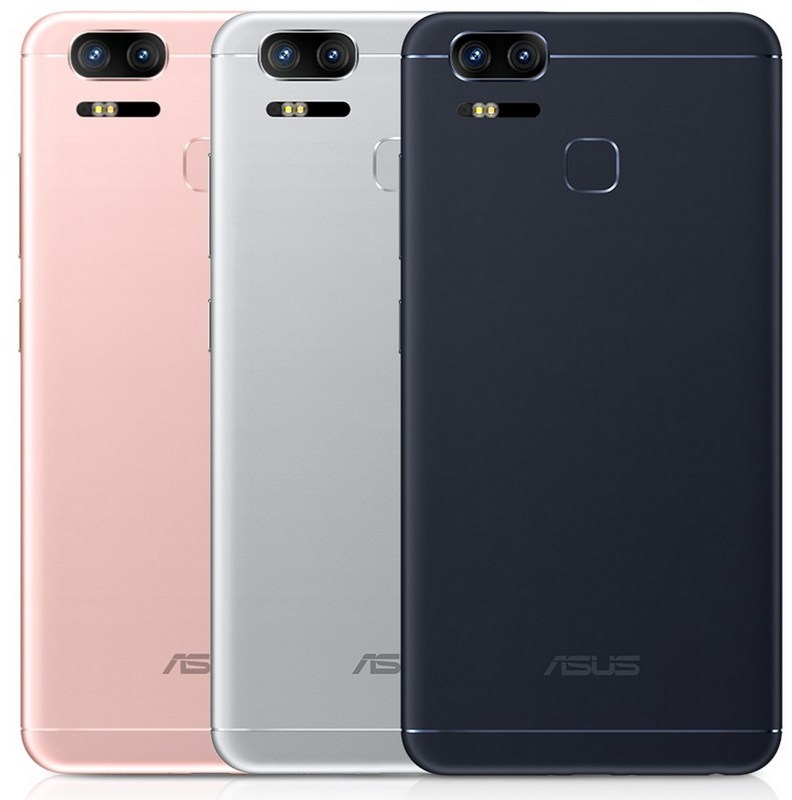
Display
ZenFone 3 Zoom is equipped with a 5.5-inch display with a resolution of 1920x1080. For such a diagonal - it is the most in terms of image smoothness. The display matrix is manufactured using AMOLED technology and provides maximum brightness up to 500 cd / m2. The color gamut is somewhat cold, saturated shades, which is typical for AMOLED. If desired, you can adjust the color rendition using the proprietary utility ASUS Splendid.
As mentioned above, Gorilla Glass 5 is used as a protective glass, the most reliable that there is today. Although it’s still not worth dropping a phone on a tile, you never know. Oleophobic coating is very high quality, it is slapped slowly.
Sound
It seems that the support of DTS Headphone: X technology in ASUS smartphones is becoming a tradition. Zoom is no exception. The main thing is to buy headphones with the support of this technology, and then you can listen to real surround sound in 7.1 format with a frequent sampling of 192 kHz / 24 bits. Also, the smartphone is equipped with 5-magnetic speakers and an amplifier NXP Smart Amp.
A photo
"Chip" ZenFone 3 Zoom - this is his photographic capabilities. I'll start from afar: from the front camera. No, her lens is normal, with a match head, but the matrix is already 13 megapixels. I remember the times when even for soap cases this was an outrageous value, and now matrices with this resolution are put in tiny selfi cameras. By the way, the Sony IMX214 matrix is installed in the ZenFone 3 Zoom front camera, the same as in the ZenFone 3 Laser. The maximum aperture is f / 2.0.
We turn to the main intrigue. Both rear cameras have received 12-megapixel CMOS-matrix. The “landscape” (wide-angle) camera is equipped with a Sony IMX362 matrix, with enlarged pixels — 1.4 microns. "Portrait" camera received a Samsung 3M3 matrix. This allowed to reduce the level of noise arising due to the thermal influence of pixels on each other. In addition, the increase in the size of the pixels increased the sensitivity of the matrix, as a result, the image noise in low light was reduced. Also in the smartphone applied technology SuperPixel post-processing - again, to combat noise.
The first camera is designed for shooting general plans. In order to get more objects into the frame, a wide-angle 6-element lens with an equivalent focal length of 25 mm is installed here. In fact, this is a common angle for smartphone cameras. The maximum aperture is f / 1.7.
The second camera is equipped with a 5-element lens with an equivalent focal length of 59 mm. It introduces much less optical distortion, and therefore much preferable for portrait photography.
Both lenses are covered with a protective Gorilla Glass. The “landscape” camera is equipped with four-axis optical stabilization. Probably, stabilization is applied here by moving the matrix itself, and not the optical element. And the range of movement is subjectively very large: the image noticeably “floats” on the screen when the smartphone tries to compensate for the hand tremor. When shooting video, electronic stabilization is triggered along three axes: the image projected on the matrix is slightly larger than the frame field so that you can “move” the frame inside the full projection, compensating for the instability of the smartphone.
ZenFone 3 Zoom uses the TriTech + triple focusing system, which includes:
- Laser autofocus. Used to accelerate and improve the accuracy of focusing at distances up to 1.5 m.
- Tracking (contrast) focusing.
- Phase focus Dual Pixel. To track the change in the position of objects in the frame, a signal from each pixel of the matrix is used.
Switching between cameras is easy. By default, when switching to photography, the wide-angle camera is activated: the “1.0x” icon is located next to the shutter button. If you click on it, the smartphone immediately switches to the second camera, and the icon changes to "2.3x". If you click on any of these icons with your finger and drag it up, the image will automatically zoom in, up to 12x. But you need to understand: everything above 2.3x is a digital zoom, not an optical zoom.

If you switched to manual mode, you can switch between cameras using the icon with the image of a mountain. In manual mode, you can control all shooting parameters: shutter speed, aperture, color temperature, ISO, focus mode, exposure compensation, and so on.

White balance color temperature range: 2500 to 6500 degrees Kelvin.

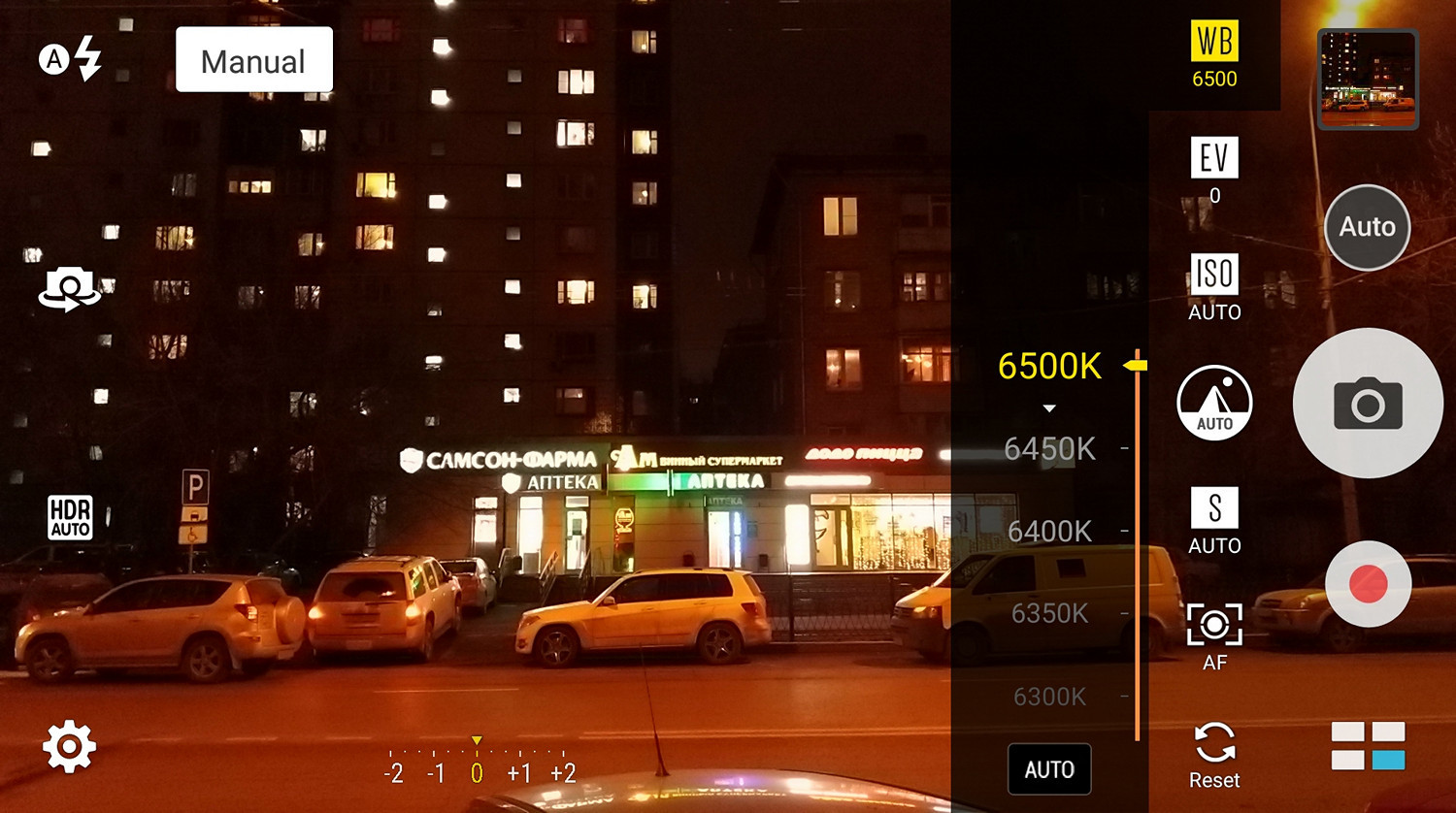
The range of sensitivity in manual and automatic modes: from 50 to 12800 ISO (FOTA 11.40.86.54).
Exposure range: from 1/16000 to 32 sec.
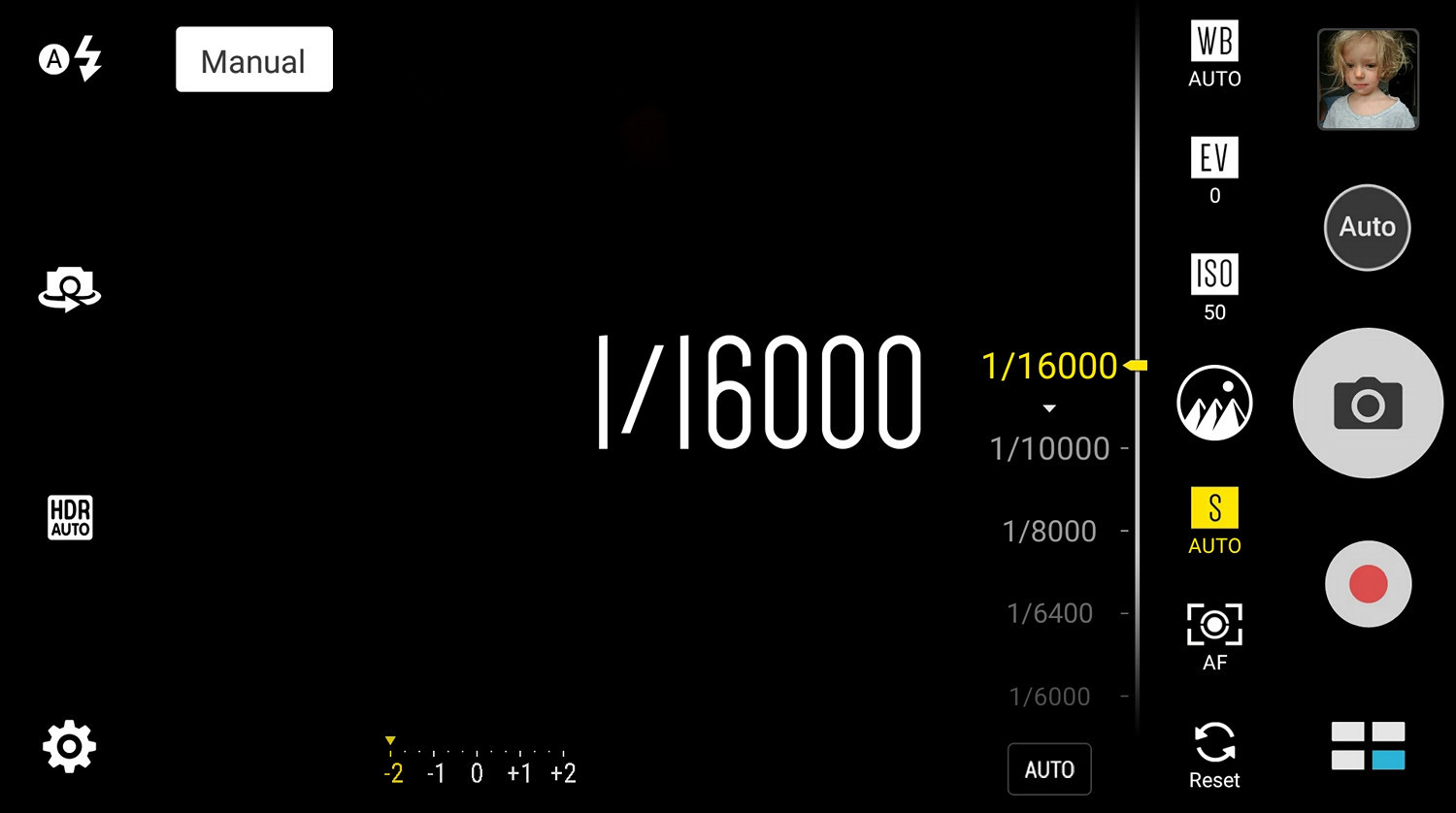
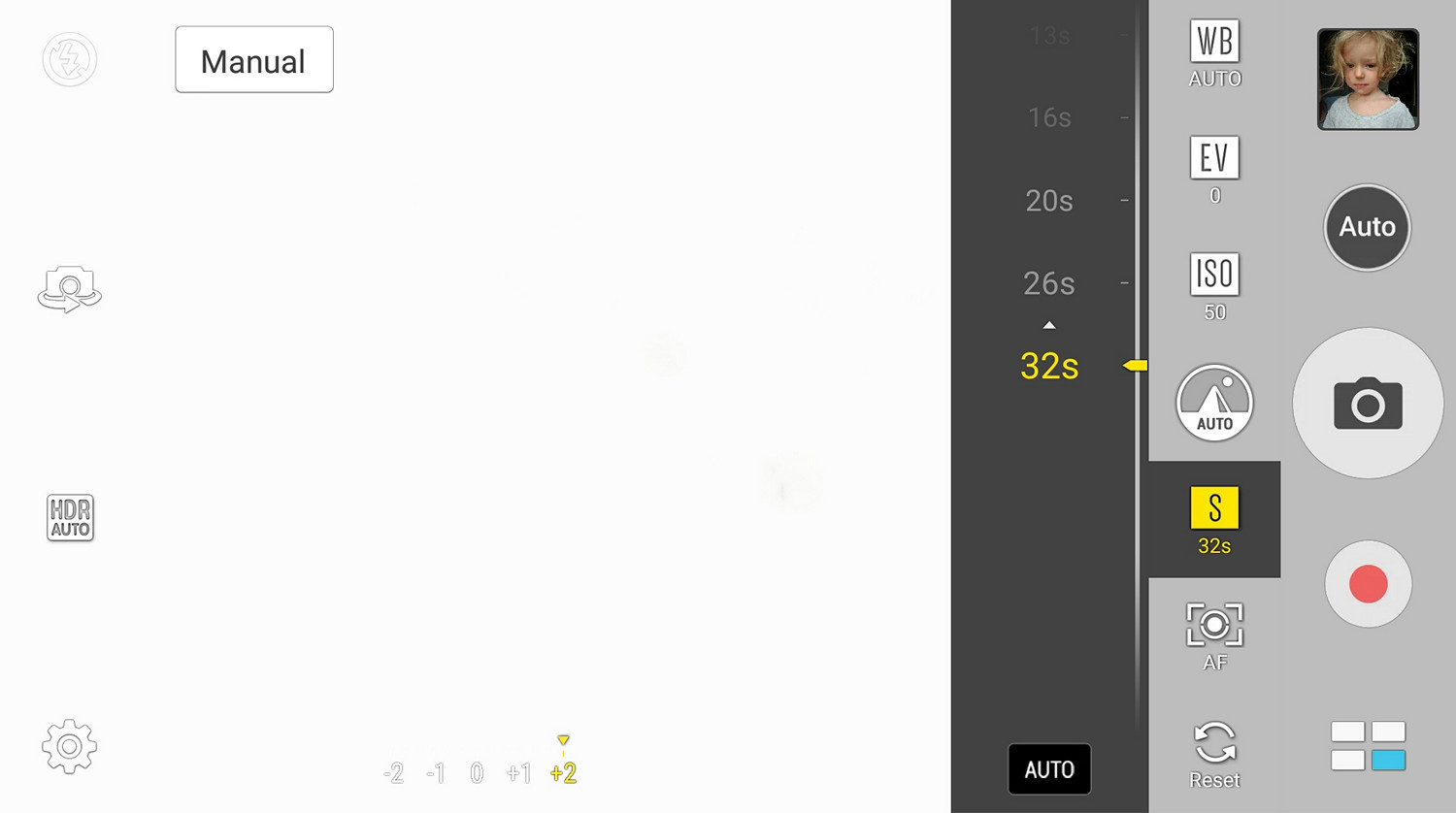
In addition, with the update 11.40.86.54, it is possible to shoot simultaneously in RAW and JPG formats. It will be interesting to those who prefer to meticulously bring their photos to perfection in Photoshop or Lightroom. And when Android is updated to version 7.0, it will be possible to view RAW files directly in the smartphone.
Shooting examples
Front-camera:

Pairs of pictures taken by the “landscape” and “portrait” cameras from the same distance and angle:
Auto mode:




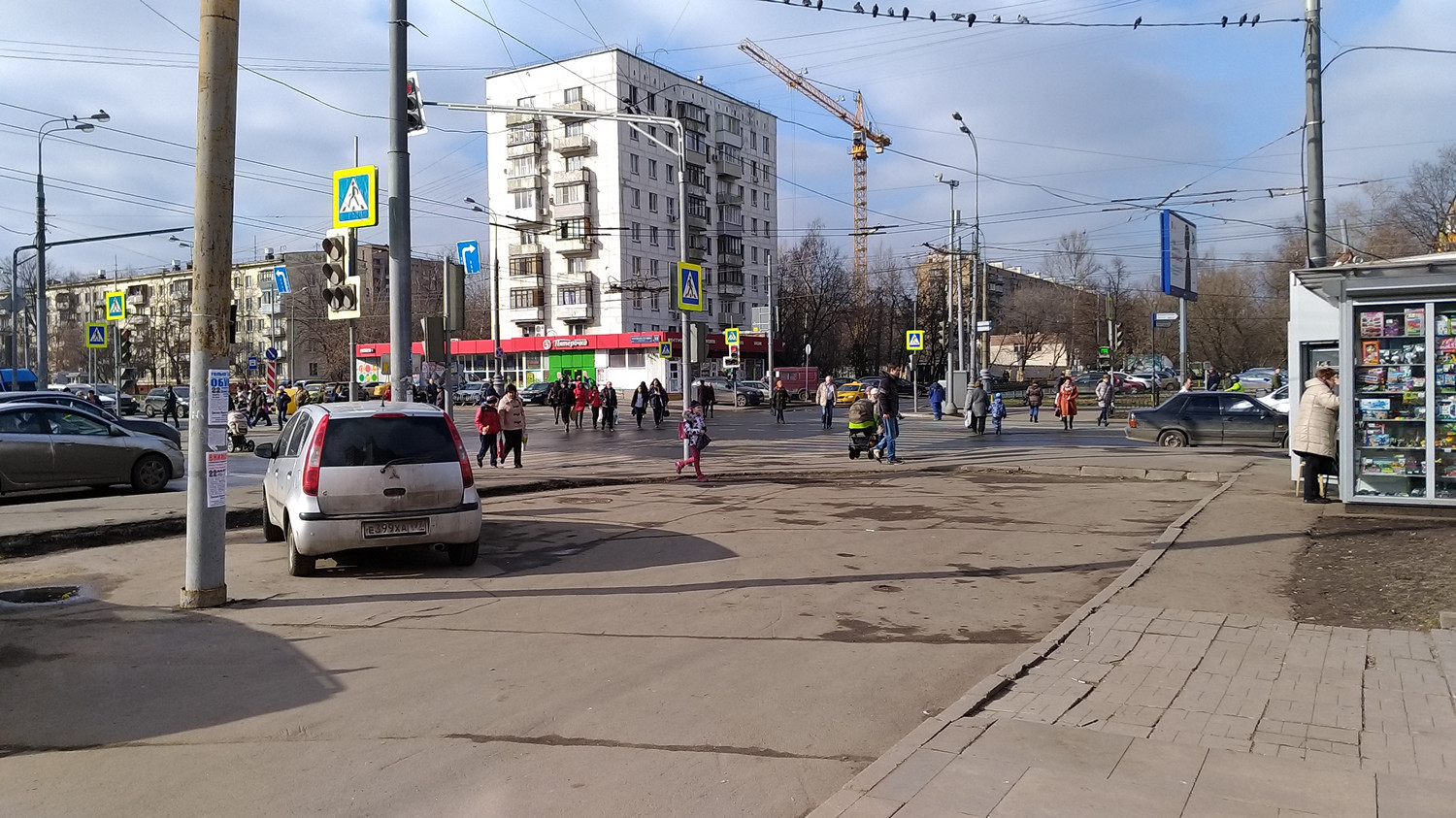

Here it was interesting for me to see how electronics cope with the not very simple lighting in the scene, closer to the backlight:



Full-size fragments from the center and lower right corner:


"Portrait" camera:

"Landscape" camera:

Full-size fragments from the center and upper left corner:

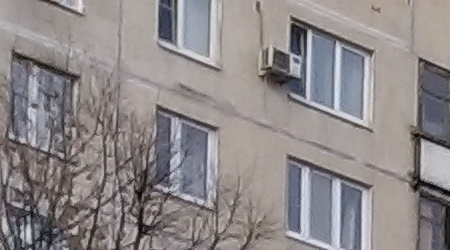
"Landscape" camera:

12x zoom:

Modes "Auto" and "HDR":

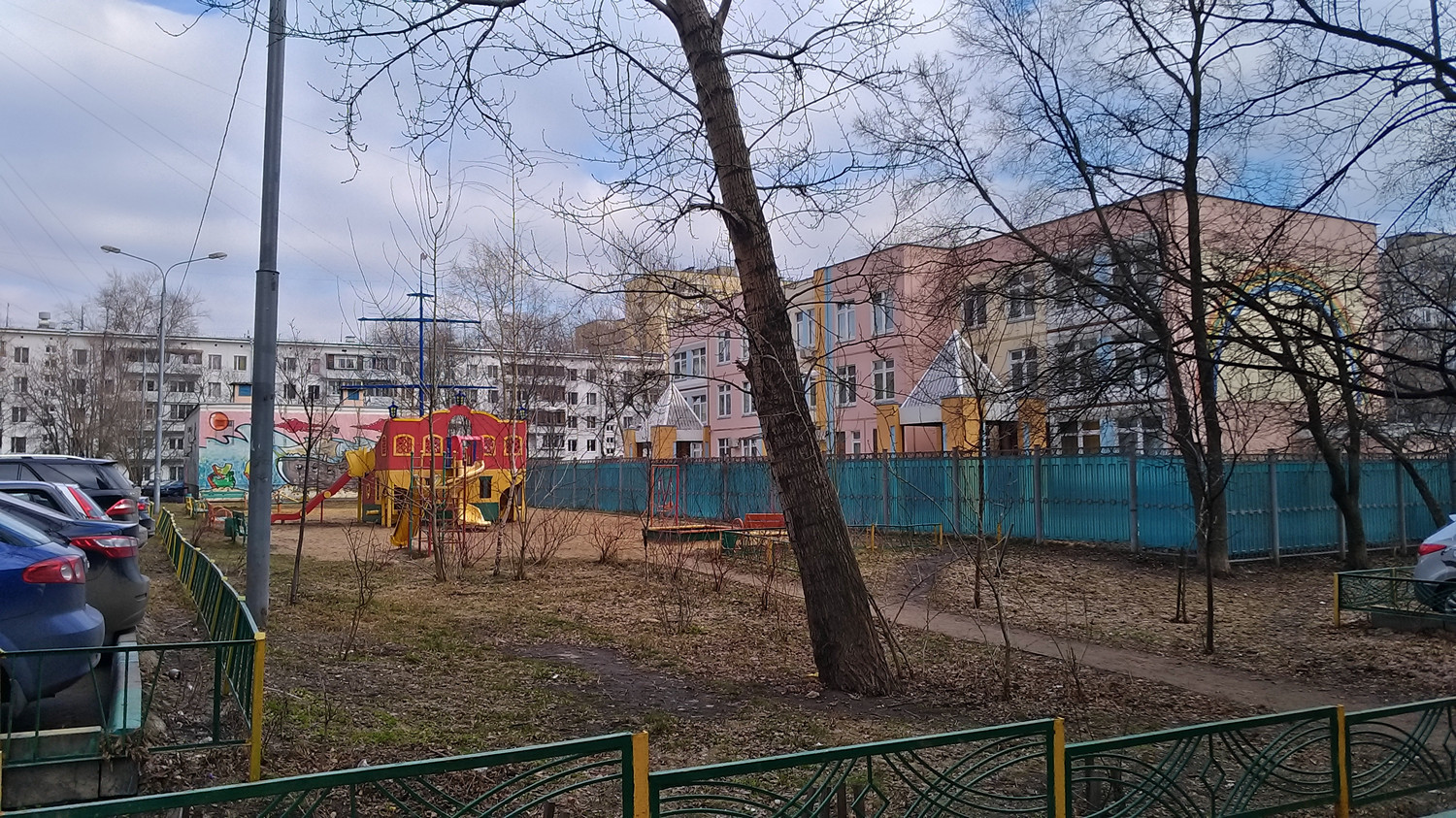


Photography is “light painting.” Therefore, the most difficult task for any camera is shooting in low light conditions. And shooting at night in the city is doubly difficult because of the huge difference in brightness between light sources and dark surroundings.

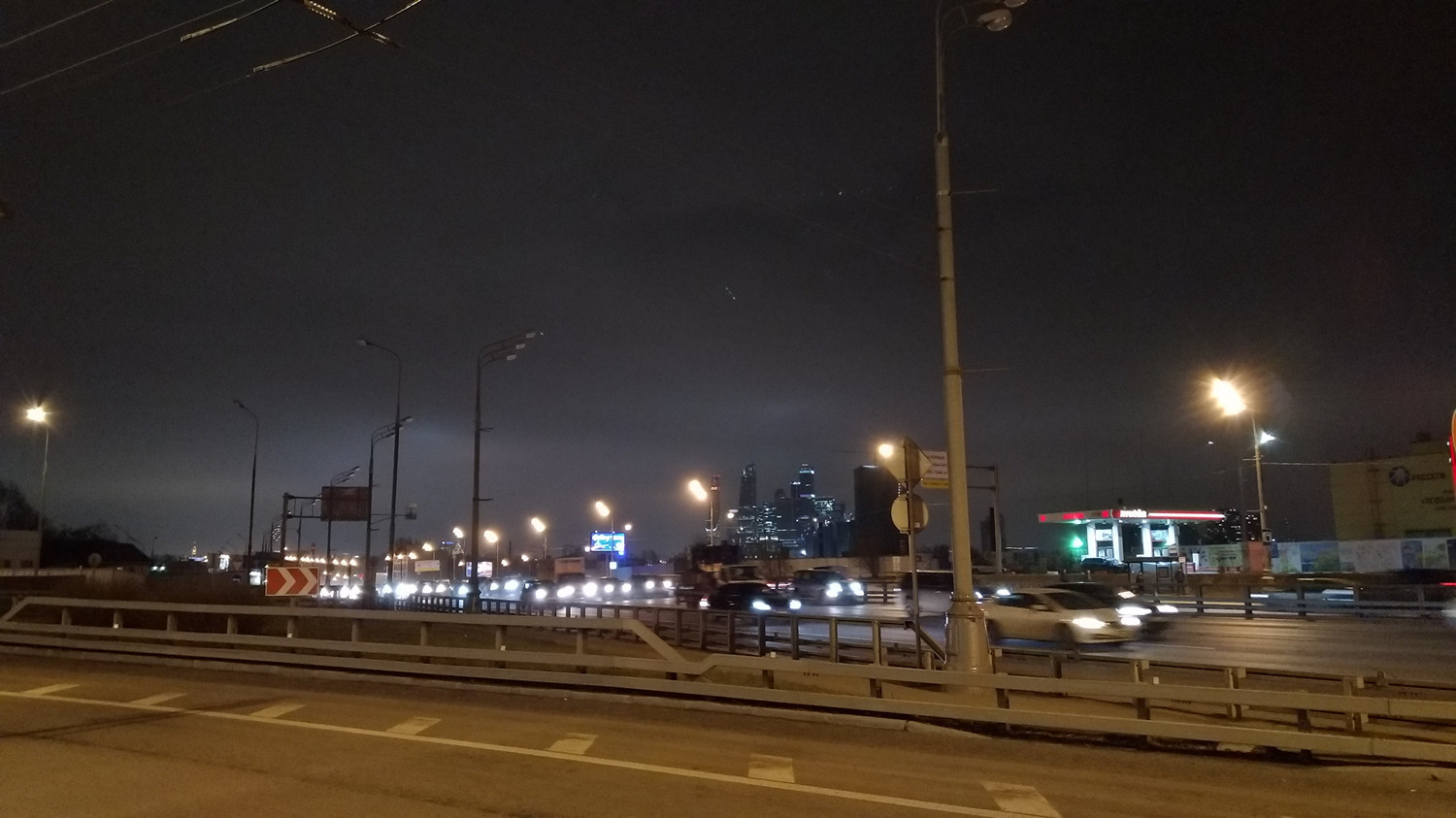
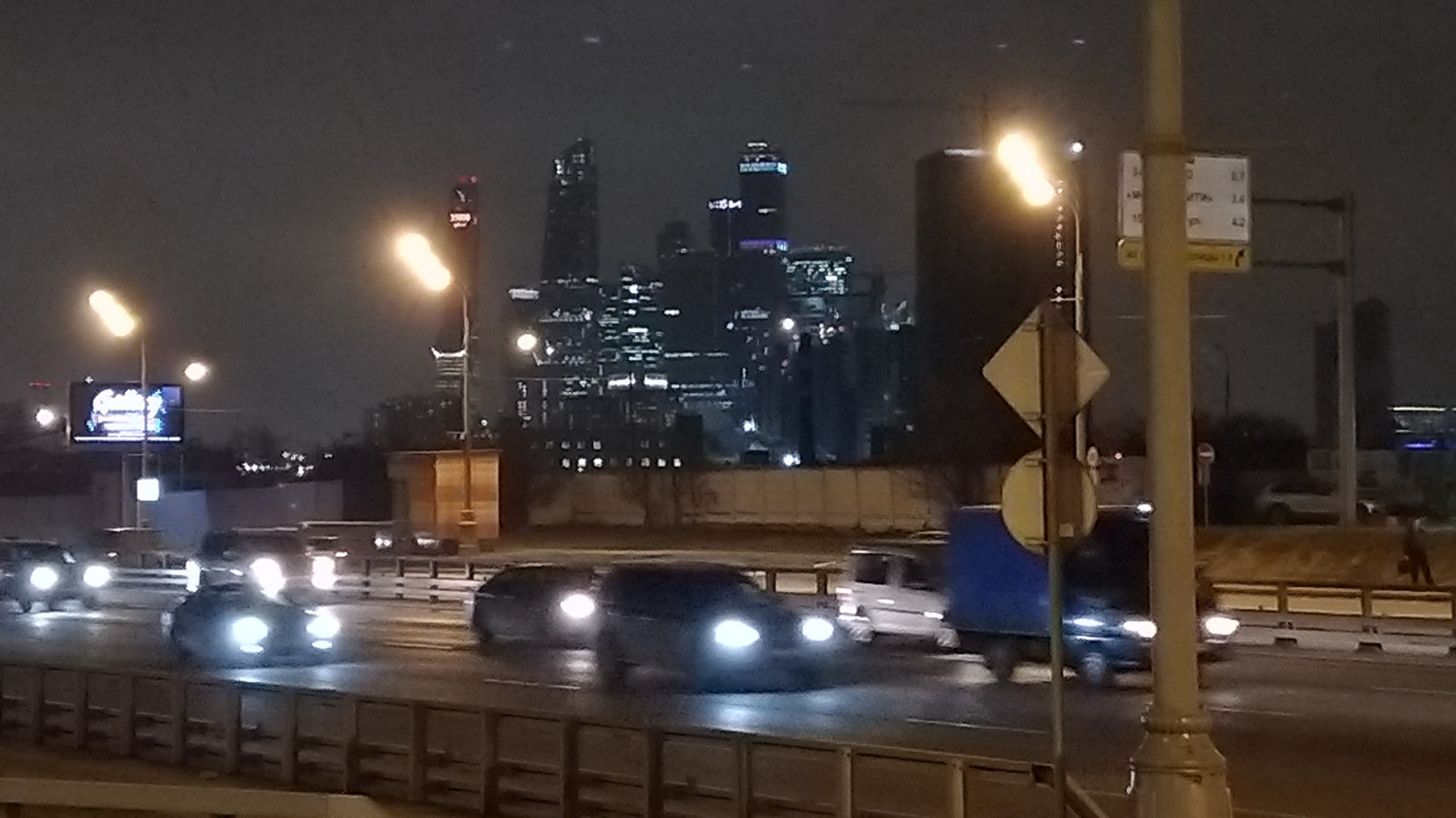

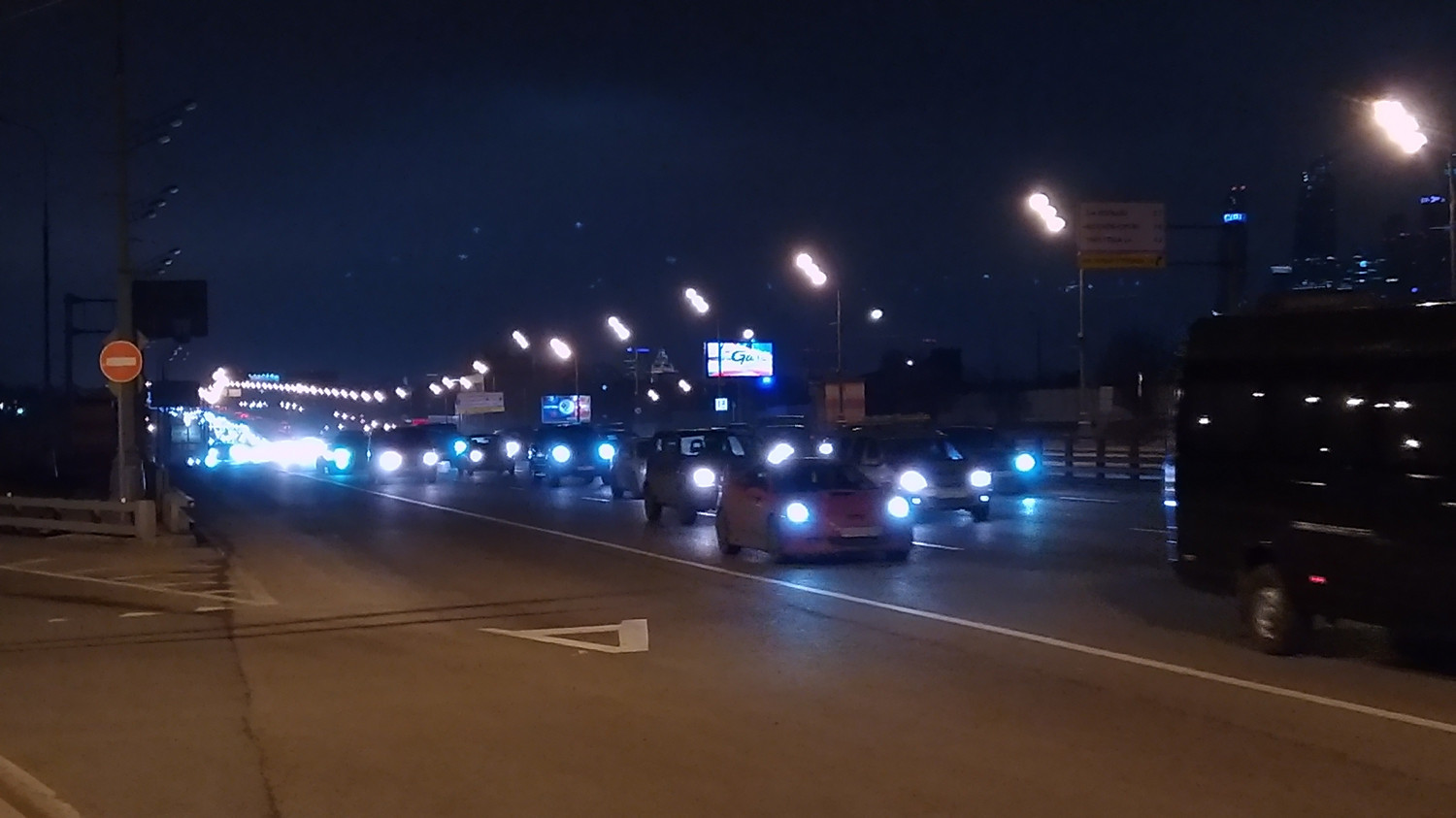
In this picture, automatics failed to accurately determine the color temperature of the lighting, in reality the lamps do not shine with green light at all. So, either manual selection of white balance on the spot or later in the photo editor will help.

The next scene is especially difficult for any camera, since there are practically no sources of lighting near the monument, it is in the twilight.
Night Scene mode:

Auto mode:


Here I experimented with white balance settings:


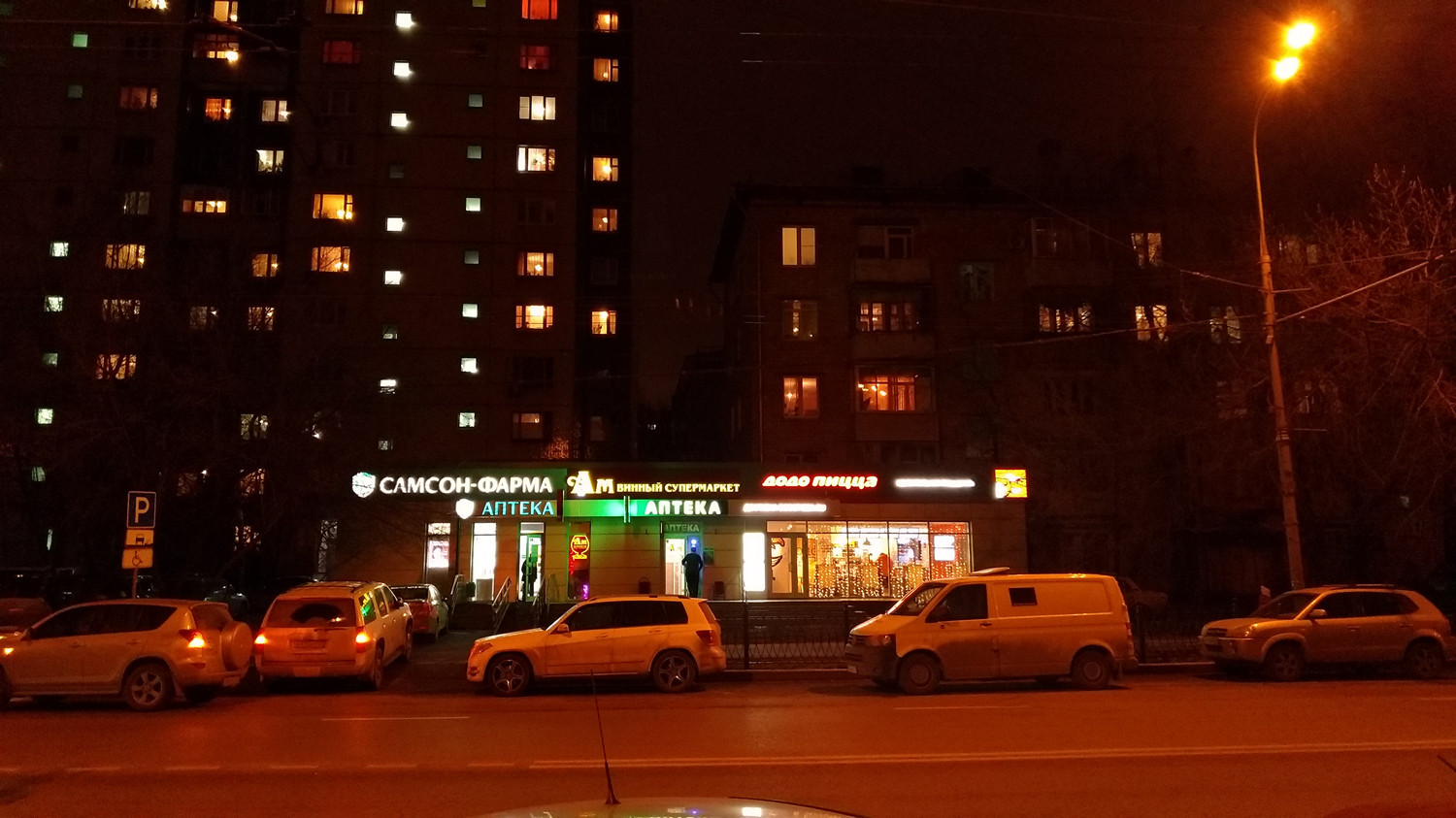

The same crane with zoom, but already at night:

Practically macro photography of A6 format notebooks:

Portrait in the backlight of the morning, with


Morning sun:

"Portrait" camera with a small additional zoom:


"Landscape" camera:
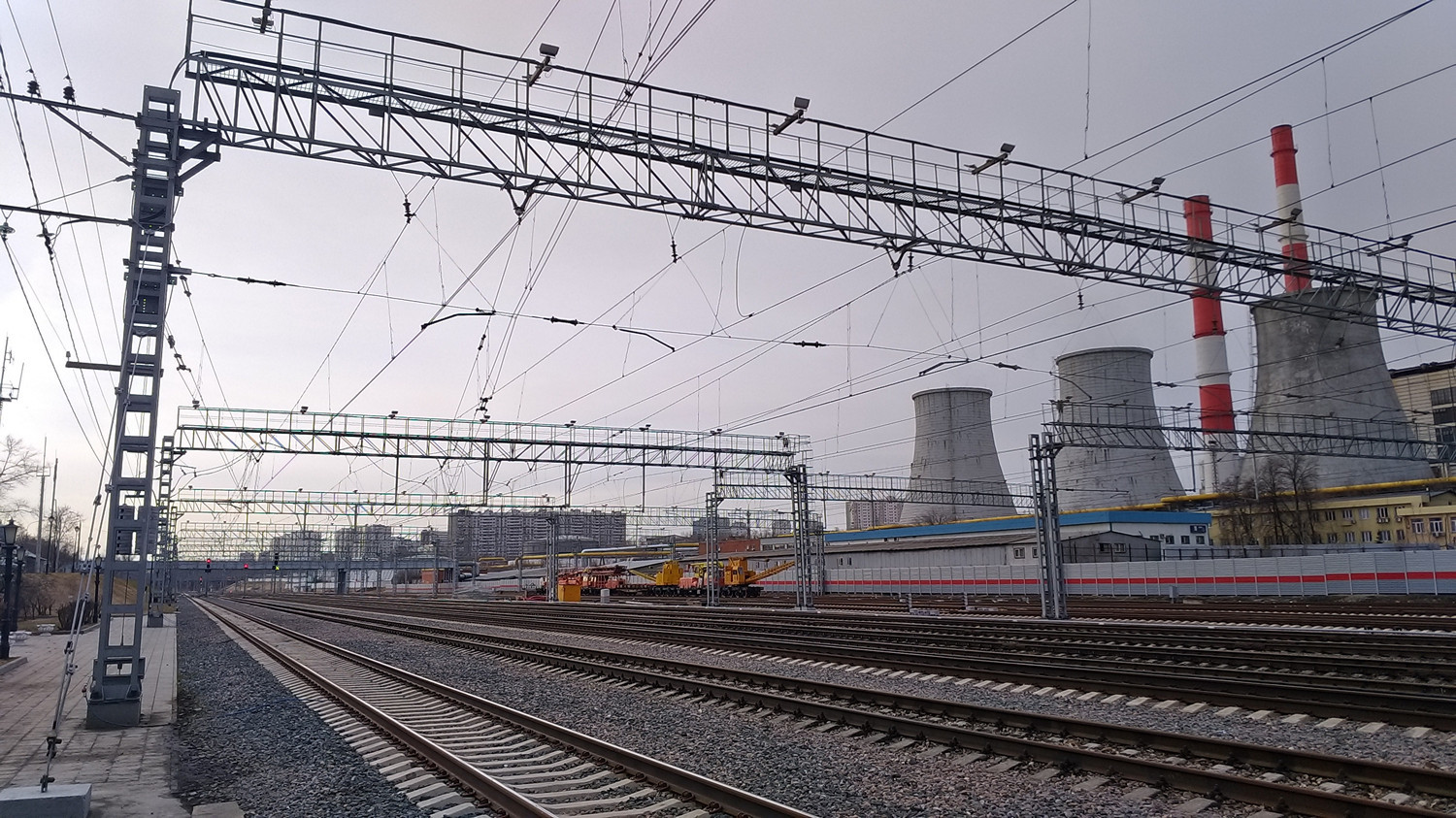
Original photographs: https://yadi.sk/d/TcyJAE-g3GNcqN
Examples of video in 4K resolution:
https://yadi.sk/i/ojgqYtaw3GLmQr
https://yadi.sk/i/t74Ofw_q3GNc3e

Pairs of pictures taken by the “landscape” and “portrait” cameras from the same distance and angle:
Auto mode:






Here it was interesting for me to see how electronics cope with the not very simple lighting in the scene, closer to the backlight:



Full-size fragments from the center and lower right corner:


"Portrait" camera:

"Landscape" camera:

Full-size fragments from the center and upper left corner:


"Landscape" camera:

12x zoom:

Modes "Auto" and "HDR":




Photography is “light painting.” Therefore, the most difficult task for any camera is shooting in low light conditions. And shooting at night in the city is doubly difficult because of the huge difference in brightness between light sources and dark surroundings.





In this picture, automatics failed to accurately determine the color temperature of the lighting, in reality the lamps do not shine with green light at all. So, either manual selection of white balance on the spot or later in the photo editor will help.

The next scene is especially difficult for any camera, since there are practically no sources of lighting near the monument, it is in the twilight.
Night Scene mode:

Auto mode:


Here I experimented with white balance settings:




The same crane with zoom, but already at night:

Practically macro photography of A6 format notebooks:

Portrait in the backlight of the morning, with


Morning sun:

"Portrait" camera with a small additional zoom:


"Landscape" camera:

Original photographs: https://yadi.sk/d/TcyJAE-g3GNcqN
Examples of video in 4K resolution:
https://yadi.sk/i/ojgqYtaw3GLmQr
https://yadi.sk/i/t74Ofw_q3GNc3e
Performance
"And instead of the heart - a fiery motor!"
The “heart” of the ZenFone 3 Zoom is an 8-core Qualcomm Snapdragon S625 , running at speeds up to 2 GHz. Graphics chip - Adreno 506. The amount of RAM - 4 GB. The amount of flash memory for data storage - 64 GB. You can also insert a memory card up to 2 TB instead of one of the SIM cards.
Actually, even from the above characteristics it is clear that the ZenFone 3 Zoom has no performance problems. The smartphone "goes for the handle," as pilots say. That is, everything flies and instantly opens as soon as you touch the icon.
Benchmark Results
3D mark
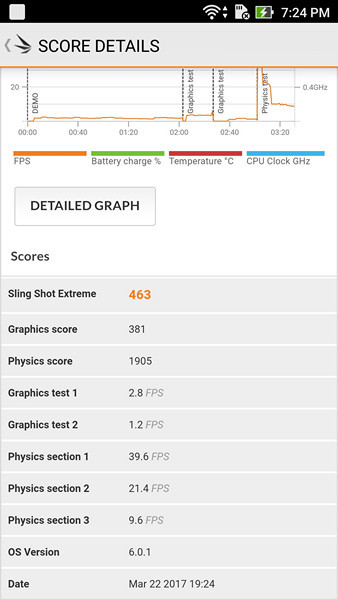
GFX bench
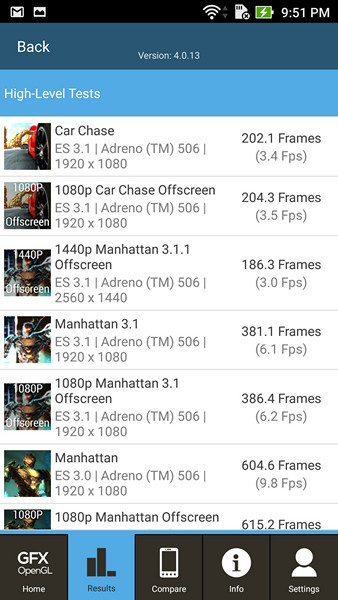
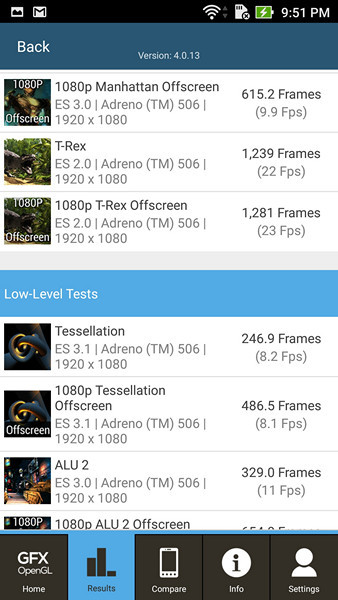
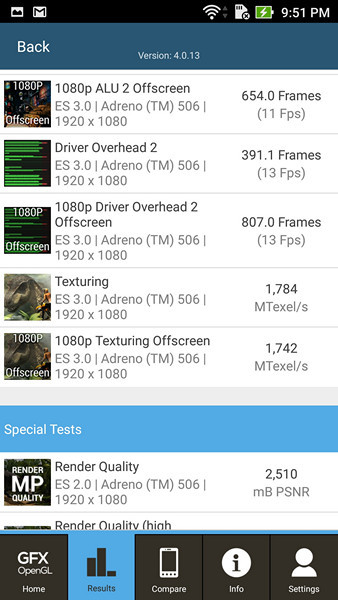
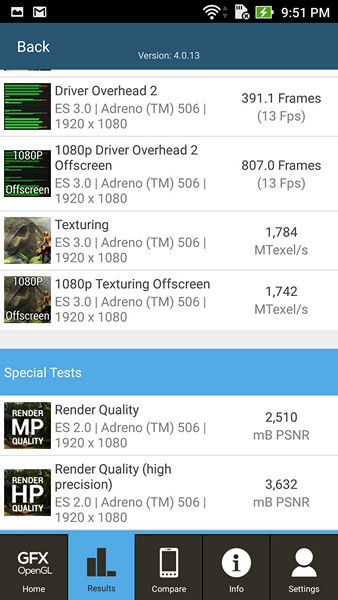
PC mark
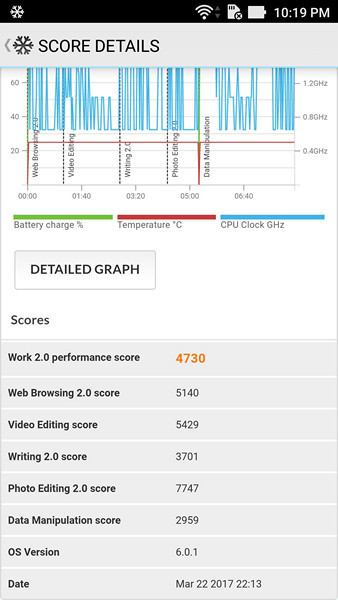
Vellamo

Geekbench
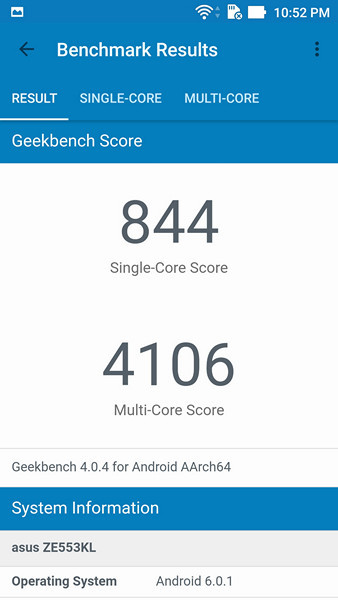
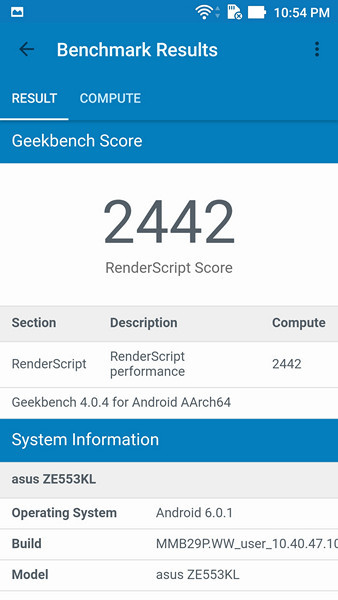
AnTuTu
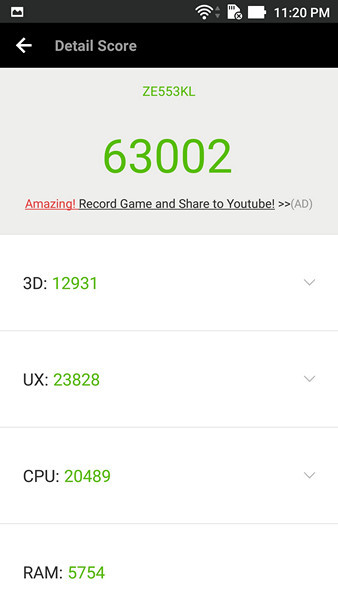

GFX bench




PC mark

Vellamo

Geekbench


AnTuTu

At the moment, Zoom comes with Android 6.0, but an update to 7.0 is expected soon. Included also comes:
- traditional set of proprietary utilities,
- HealthHub fitness tracking app


- and Mobile Manager utility

Another nice feature of the ZenFone 3 Zoom is a capacious battery - 5000 mAh. For some strange reason, I could not get rid of the PC mark test to find out how long the smartphone would work under the “surfing” load: I ran it three times, and every time after several hours of work, the testing stopped silently. So I can extrapolate the result of the ZenFone 3 smartphone , which is equipped with the same processor and graphics chip. He then worked over 12 hours on a 3000 mAh battery. Then in the case of Zoom you can talk about 18-20 hours of work. But this is not a completely correct assumption: the Zoom has an AMOLED display, not an IPS, and it has a different power consumption. The more bright colors on the screen, the more energy AMOLED consumes compared to IPS. And when testing PC mark under load, in most cases a light background is used that simulates reading documents and websites. I noticed that the testing stopped after about 6-7 hours of operation, while the battery charge was about 70%. In this case, it can be assumed that with this load profile ZenFone 3 Zoom will work 14-16 hours.
According to the manufacturer, the smartphone is able to work up to 42 days in standby mode (with maximum energy saving), and record up to 6.5 hours of video in 4K resolution.
Zoom can also work as an external battery for other gadgets, that is, to act as a power bank. For this you can use the included USB-USB Type C adapter.
Conclusion
ZenFone 3 Zoom - a representative of the first wave of smartphones with two main cameras. Obviously, because of the most severe restrictions on the size, it is almost impossible to squeeze something else out of the smartphone cameras. When integrating zoom lenses into smartphones (i.e., capable of “zooming in”, changing their focal length), developers have to choose: either sacrifice compactness and aesthetics (the lens will perceptibly protrude from the body) or image quality. The fact is that zoom lenses have a luminosity worse than lenses with a fixed focal length. That is, they have to be increased in size so that they can catch more light. And for smartphones, this is especially critical, because most often people take pictures of them in low light conditions. In addition, additional optical elements in zoom lenses reduce their resolution. So engineers have to look every time for an acceptable balance between the size of a camera module with a zoom lens and image quality.
The developers of ZenFone 3 Zoom cut the Gordian knot: instead of one zoom lens, they put two “fixes” with different focal lengths. As a result, we didn’t have to sacrifice compactness and design; we managed to maintain higher luminosity and higher resolution. But since absolutely no zoom is possible - users will be uncomfortable - I had to implement a 12-fold digital zoom. And digital zoom is just an increase in a fragment of an image from a matrix using on-the-fly extrapolation and smoothing algorithms. That is, any digital zoom is not comparable a priori in quality with optical. On the other hand, photo matrices are also progressing, and with each new generation, the image quality is also improved when using digital zoom. And if 5-7 years ago it was impossible to look at the "digital-smart" pictures without tears, then today they look quite good on the screens of smartphones and tablets.
Two cameras with different lenses are a curious way to circumvent the disadvantages of zoom lenses, the experiment of manufacturers, which may well become the standard for the industry. Personally, I did not have any difficulty in using two cameras. Switching is fast and almost seamless. The quality of photos is very decent, especially considering the modest size of lenses and arrays. Even at night, the noise level is relatively low, and stabilization systems allow not only to take confident pictures, but also to shoot 4K video. Add here and the focusing system: I never had the need to tell the smartphone where to look, there were no problems with defocusing. ZenFone 3 Zoom - a good gadget for fans of mobileography. But even if you do not photograph more often than the average user, then pay attention to decent performance and a very capacious battery. The last in our time is especially valuable.
Recommended retail price: 29,990 rubles (version with 64 GB of memory).
Source: https://habr.com/ru/post/370323/
All Articles